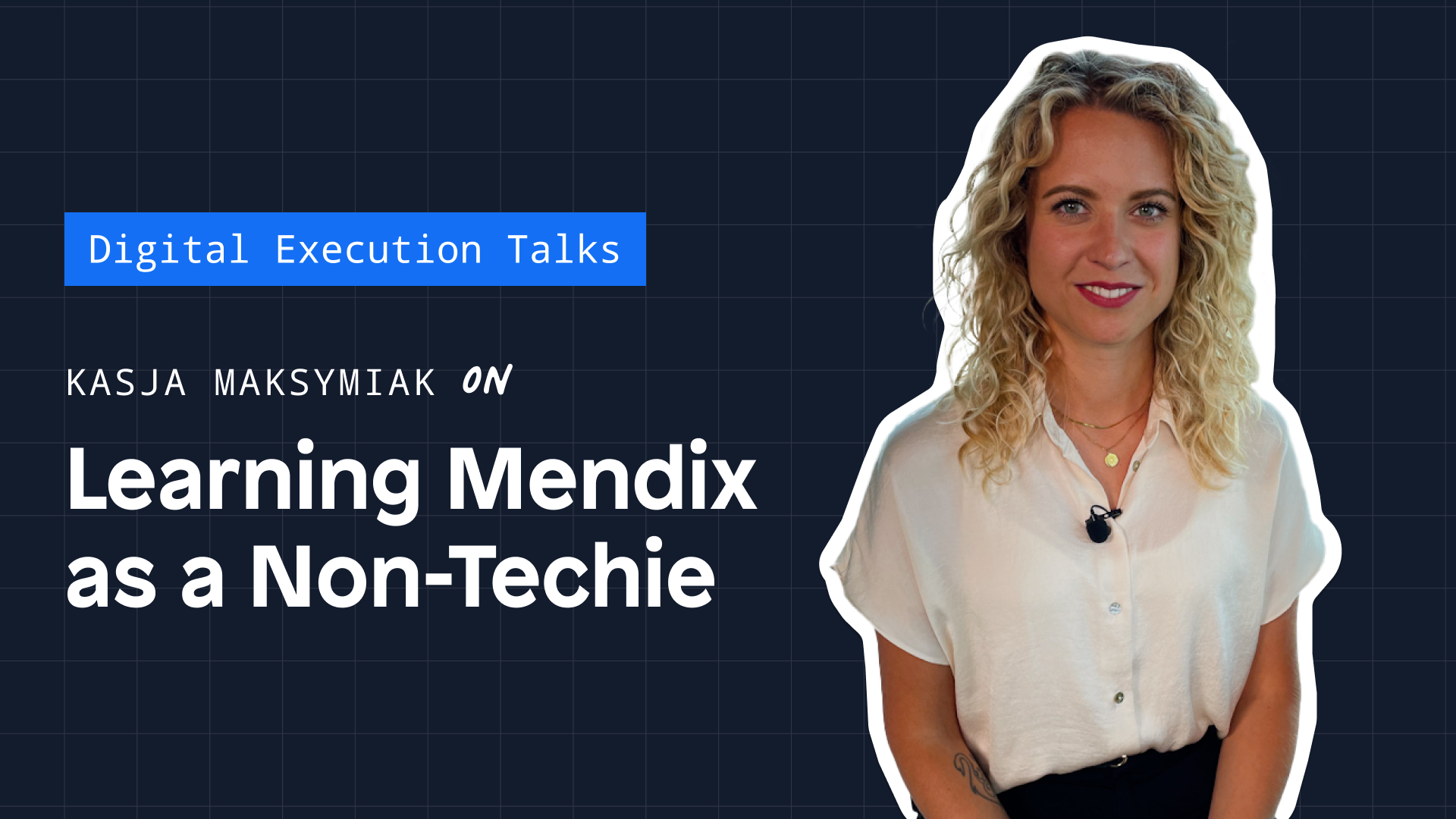Sourcing and Enablement Strategies for Low-Code Development

Building and enabling a Low-code Center of Excellence (CoE) is about ensuring it supports your organization’s long-term goals.
Of course, for your CoE, people matter, and you need a way to strategically source talent and partners who not only can help you achieve those goals, but also align with your organization’s culture.
There are three common scenarios encountered when sourcing for a Mendix Center of Excellence (CoE):
- You have existing talent that could transition to Mendix development.
- You are looking to recruit new talent.
- Your organization outsources development efforts.
There is no one-size-fits-all solution when it comes to sourcing and enablement strategies. No matter your organization’s situation, the focus should always be on alignment with business objectives and the seamless integration of low-code into the broader technological framework.
How to leverage existing talent for your Mendix CoE
Transition full-stack developers to Mendix
You may have full-stack developers in your company, eager to expand their repertoire. Leverage this. They can easily adapt to the Mendix platform, adding low-code proficiency to their skillset. The transition should naturally be accompanied by targeted training to equip them with the nuances of the Mendix environment.
Empower business analysts and admin staff for Mendix development
When you have staff members like business analysts or architects with an interest in software development, albeit without formal coding experience, there is a unique opportunity.
These individuals are often skilled in creating solutions with productivity tools and can be excellent candidates for Mendix development with proper onboarding and training.
Watch Mendix MVP Kasja Maksymiak share her journey from a non-techie to becoming a Mendix MVP:

Talent pool development
Creating an internal talent pool is a forward-thinking strategy that ensures a steady supply of Mendix professionals. It enhances the agility of your workforce and can result in significant cost savings.
Key actions include:
- Identifying individuals who show a propensity for Mendix development.
- Implementing a structured onboarding process and enablement plan for recruits new to Mendix, which could also be used for enabling partner resources, too.
Creating a Mendix enablement strategy
The enablement journey for Mendix encompasses several key phases, each building upon the last to create a robust framework for development and innovation.
- Preparation – Building a strong foundation: Lay a solid groundwork with dedicated Mendix resources and tailored training, essential for a comprehensive understanding of Mendix’s capabilities.
- Start – Kickstarting the development process: Take action and guide your team through Mendix adoption and developing your first application with support from seasoned experts, like Mendix Expert Services or certified Partners.
- Structure – Enhancing skills and independence: Define your processes and build out your talent pool. Here, you focus on Mendix certification and identifying potential leaders within your teams.
- Scale – Broadening the horizon: Expand your development capabilities and take on more complex projects. Organizations at this stage tend to leverage their internal Mendix communities and even add trainers to their teams.
Cultivating in-house training expertise
To support scaling, developing the ability to train your team internally is essential.
If your organization is achieving 12-15 certifications per year, it’s beneficial to consider developing an in-house training program. Leveraging Mendix’s Train the Trainer program, you can ensure ongoing development and maintenance of best practices within your team. The ideal candidate for becoming a trainer is at least Intermediate Developer certified (preferably Advanced) with good communication skills. (If you’re ready to consider taking this step, reach out to our Academy team for next steps: [email protected].)
Recruitment: Crafting your Mendix dream team
When you don’t have an internal talent pool to leverage, but you do want to build up your own Mendix development capability, you can start searching for external talent.
Traditionally, the search for developers has revolved around computer science graduates. But Mendix development, with its low-code nature, opens doors to those who may not have a typical programming background but possess a strong analytical mindset.
Look towards individuals with experience in problem-solving and process optimization, or even those with a flair for design thinking. These professionals often thrive in a low-code environment and can bring fresh perspectives to the table.
Focused recruitment
Recruitment must be seen as a strategic investment. Given the competitive market for Mendix developers, consider non-traditional recruitment channels such as the Mendix University Program.
The strategy should encompass:
- Hire for diversity in skills and mindsets.
- Invest in training people when experienced external candidates are sparse.
- Leverage the Mendix Developer Job Board to advertise your positions within the Mendix Community.
Establish a traineeship-to-hire program
Traineeships provide a practical introduction to Mendix development, benefiting both the company and potential hires by offering an extended evaluation period and a rich learning experience.
During my time at Mendix’s internal App Factory, I created a Mendix Trainee program. We offered a 12-month traineeship to promising, freshly graduated talents. This initiative proved to be a strategic response to the industry’s talent acquisition challenges.
Compared to the lengthy hiring process for experienced developers, trainees quickly adapted.
Within 90 days, they mastered Mendix basics and completed their first application. Progressing rapidly, they aimed for an Advanced certification by six months and had the option to join the App Factory or explore other roles within the company by the end of the year.
This approach not only fills immediate staffing needs but also cultivates a skilled, versatile team capable of advancing your goals in digital transformation.
Integrate outsourced development with Mendix for Agile solutions
If software development is traditionally outsourced in your organization, you don’t have to focus on sourcing and training your own developers.
However, integrating Mendix into the mix requires a strategic approach. Internal teams must be empowered with governance capabilities to oversee the development lifecycle, ensuring that the outsourced solutions meet the business’s quality and strategic objectives.
Selection of implementation partners
When augmenting your Agile teams with external partners, it’s crucial to consider compatibility with your organization’s culture and strategic objectives.
There are various options:
- Boutique Partners: Offer specialized Mendix expertise and might provide a higher level of technological skill and industry knowledge.
- Global System Integrators (GSI): Ideal for leveraging global scalability and offshore capabilities.
- Independent Consultants: Can offer more personalized services and flexibility. Another advantage is that they can have very high expertise and specialized skills.
Mastering Mendix sourcing and enablement
With thoughtful execution of these strategies, a Mendix CoE can become a linchpin in your organization’s digital transformation efforts, providing the agility to adapt quickly to market changes and maintain a competitive edge.
